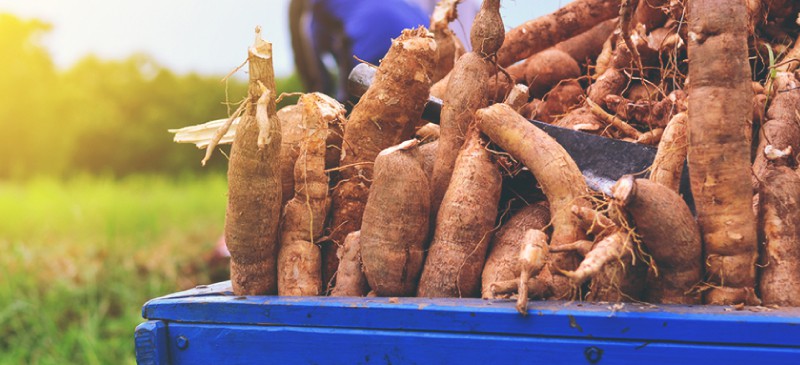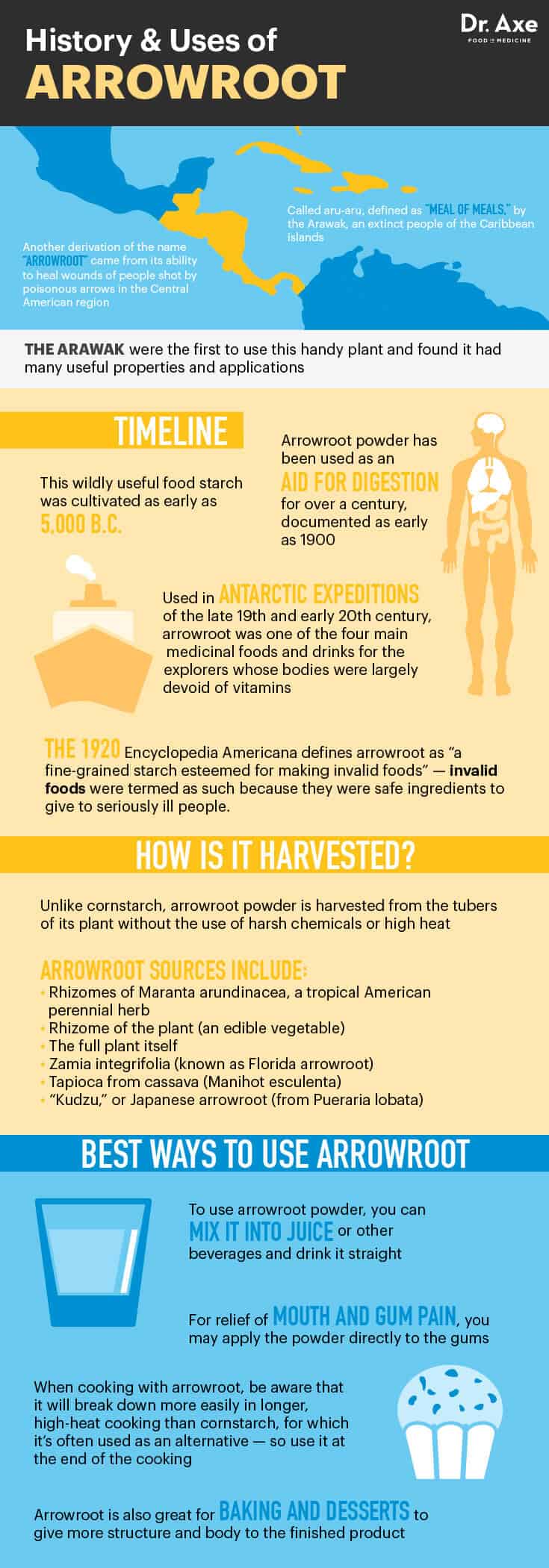This Dr. Axe content is medically reviewed or fact checked to ensure factually accurate information.
With strict editorial sourcing guidelines, we only link to academic research institutions, reputable media sites and, when research is available, medically peer-reviewed studies. Note that the numbers in parentheses (1, 2, etc.) are clickable links to these studies.
The information in our articles is NOT intended to replace a one-on-one relationship with a qualified health care professional and is not intended as medical advice.
This article is based on scientific evidence, written by experts and fact checked by our trained editorial staff. Note that the numbers in parentheses (1, 2, etc.) are clickable links to medically peer-reviewed studies.
Our team includes licensed nutritionists and dietitians, certified health education specialists, as well as certified strength and conditioning specialists, personal trainers and corrective exercise specialists. Our team aims to be not only thorough with its research, but also objective and unbiased.
The information in our articles is NOT intended to replace a one-on-one relationship with a qualified health care professional and is not intended as medical advice.
Arrowroot Helps Boost Immunity & Soothe Digestion
April 26, 2018

What do papermaking, gluten-free baking, cosmetics and homeopathic remedies share in common? One answer rises to the surface: “arrowroot.”
This wildly useful food starch was cultivated as early as 5,000 B.C., and was originally known as aru-aru, defined as “meal of meals,” named as such by the Arawak. This now-extinct people of the Caribbean islands were the first to use this handy plant and found it had many useful properties and applications. Another derivation of the name “arrowroot” came from its ability to heal wounds of people shot by poisonous arrows in the Central American region.
Today, arrowroot is used most often as a thickener in food. It serves as a gluten-free, healthier alternative to cornstarch, which is often a genetically modified (GMO) product and even when it’s organic it’s estimated that 25 percent of organic corn is GMO contaminated! (1)
Also beneficial for sensitive digestive systems, it is one of the easiest starches for the body to digest. It’s an excellent homeopathic treatment for various common medical issues and is also a natural immunity booster.
Perhaps arrowroot’s best feature of all? Its anti-inflammatory properties. As I state in my article about a healing diet, most modern diseases are due to inflammation. (2) It can be another tool you use to fight inflammation and fight disease.
Arrowroot Nutrition Facts
The term “arrowroot” is used to describe the starch obtained from the rhizomes of Maranta arundinacea, a tropical American perennial herb, the rhizome of the plant, or the full plant itself. In addition to the Maranta arundinacea variety, it can also be obtained from Zamia integrifolia (known as Florida arrowroot) and tapioca from cassava (Manihot esculenta). A similar plant, known as “kudzu,” is referred to as Japanese arrowroot (from Pueraria lobata) and is used in the same fashion as the American herb variety.
Arrowroot powder is harvested from the tubers of its plant without the use of harsh chemicals or high heat. In fact, the modern extraction process, which includes washing, peeling, soaking, and drying the fleshy roots in the sun, is not much different from the process used throughout recorded history. (3)
One cup of sliced arrowroot (weighing about 120 grams) contains:
- 78 calories
- 0.2 grams fat (0.1 grams polyunsaturated fat)
- 31 milligrams sodium
- 16 grams carbohydrates
- 5 grams protein
- 545 milligrams potassium (16 percent DV)
- 2.7 milligrams iron (15 percent DV)
- 0.3 milligrams vitamin B-6 (15 percent DV)
- 0.2 milligrams thiamin (14 percent DV)
- 2 grams niacin (10 percent DV)
- 30 milligrams magnesium (7 percent DV)
- 0.1 milligrams riboflavin, or Vitamin B2 (6 percent DV)
- 2.3 milligrams vitamin C (3 percent DV)
Related: Top 5 Benefits of Taro Root (Plus How to Add It to Your Diet)
6 Arrowroot Benefits
1. Aids Digestive System
Arrowroot powder has been used as an aid for digestion for over a century, documented as early as 1900. According to research about Antarctic expeditions of the late 19th and early 20th centuries, it was one of the four main medicinal foods and drinks for the explorers whose bodies were largely devoid of vitamins. (4) The 1920 “Encyclopedia Americana” defines it as “a fine-grained starch esteemed for making invalid foods.” Invalid foods were termed as such because they were safe ingredients to give to seriously ill people.
In recent years, research has shown arrowroot to be an effective natural treatment for diarrhea. A 2000 study determined the efficacy of the powder to reduce diarrhea and constipation in patients with irritable bowel syndrome (IBS) and discovered it to be extremely successful. Not only does it greatly reduce occurrences of diarrhea, but it also minimizes abdominal pain. (5)
While the specific reasons for a decrease in digestive problems has yet to be determined, there is sufficient evidence, both historically and in recent years, that arrowroot is an excellent, all-natural, inexpensive treatment for problems with digestion. To prevent constipation, it’s recommended that you don’t take arrowroot with other medications or supplements used to alleviate diarrhea. (6)
2. Safe for Infants
Because of its starchy content, mild flavor and gentleness on the digestive system, arrowroot is a safe ingredient to use in food for infants. You can use this starch in many different types of recipes for your infant or older children, without having to worry about it causing tummy aches or other digestion issues. (7)
Not only is this a safe food ingredient for your little ones, arrowroot is also a common ingredient in teething cookies for babies. As a virtually allergen-free product, it’s an ideal gum-soothing ingredient that poses little-to-no risk of allergic reaction. (8)
3. Treats Urinary Tract Infection
Women susceptible to urinary tract infections, or UTIs, are often prescribed hygiene and foods to help stave off future infection and soothe inflammation. One such food is arrowroot, and it can be one of the effective home remedies for bladder infections or UTIs. (9)
Arrowroot is a demulcent, which is simply a soothing substance used to relieve pain in inflamed or irritated mucous membranes. As it earned its name by serving as a treatment for poisonous arrow wounds, it’s no surprise that this useful plant relieves inflammation.
The antiseptic properties of arrowroot help treat UTIs and also prevent some future flare-ups, which is why doctors often recommend common ingestion of it for women with frequent infections.
4. Boosts Immune Function
The extracts of arrowroot powder also exhibit cytotoxic activities that help in building immunity. This means the Maranta arundinacea extract boosts the production of cells within the immune system.
An evaluation of the immunostimulatory effect of arrowroot in 2012 proved that those same tuber extracts stimulated the immune systems of cells, both when tested in vitro (in test tubes) and in vivo (in a live animal), again proving the usefulness of arrowroot in boosting immune system health. (10)
5. Fights Foodborne Pathogens
One fascinating feature of arrowroot is its ability to fight foodborne pathogens that cause illness. Research has proven a reduction in pathogens in various foods, especially liquid foods such as soup. Here, arrowroot tea massively reduced the amount of salmonella virus in the soups that were tested. (11)
This is yet another reason why arrowroot is a recommended medicinal food ingredient to keep the digestive system safe. It also speaks to some far-reaching effects it might have to help protect people in third-world countries from some of the more common infections due to poor water quality.
6. Soothes Gum and Mouth Pain
Babies aren’t the only ones who can benefit from the soothing properties of arrowroot. It can be applied directly to painful gums and sore mouth to relieve pain, thanks to its anti-inflammatory properties. (12) To further relieve pain in the gums and mouth, also add coconut oil pulling to your routine.
The History of Arrowroot
This little plant is much more than a starch thickener! Its history includes a variety of medicinal and other uses, starting with the theory on where it got its popular name. Folklore says this tropical perennial was used by inhabitants of Central America to draw out poison and reduce inflammation from poisonous arrow wounds.
Archaeologists have discovered evidence of arrowroot cultivation as far back as 7,000 years ago. In the last century or so, production of traditional arrowroot has been mainly in St. Vincent and the Grenadines, a Central American island. Rhizomes are harvested from October to May each year.
While arrowroot hasn’t been used as much in recent years, a study from 2005 touts it as a new and interesting alternative for food developers. (13) In the last several decades, its use has declined because of the less expensive cornstarch, but that trend could very likely be reversed, as arrowroot offers a healthier, non-GMO alternative as a thickener.

How to Use Arrowroot
To use arrowroot powder, you can mix it into juice or other beverages and drink it straight, although it’s important to follow recommended guidelines for consumption. For relief of mouth and gum pain (as noted above), you may apply the powder directly to the gums.
When cooking with arrowroot, it’s useful to note that it will break down more easily in longer, high-heat cooking than cornstarch, for which it’s often used as an alternative. Therefore, it’s generally a good idea to use it at the end of cooking.
If you’re using it to thicken sauces, soups, stews, or gravies, you’ll begin by creating a “slurry.” Slurry is a fun word that refers to what you get after mixing the powder into a cold liquid (like water or milk). Then, simply pour the slurry into the hot sauce and allow it to thicken. Arrowroot will create a glossy look in final sauces and stews.
In addition to thickening sauces, this powder is great for baking and desserts to give more structure and body to the finished product. It may also be utilized as a binder in omelets or other items in which you may want to substitute eggs. This makes it a handy product for people on a vegan diet; plus, it’s gluten-free, and pairs well with all gluten-free flour!
And, just in case you were wondering … it’s got a few more interesting applications that have nothing to do with food!
In 1901, the J.W. Butler Paper Company wrote a description of paper-making processes from the earliest known record down to the present time. They explain a process of special photographic paper production that included the use of arrowroot in water, along with sodium, chloride and a small amount of citric acid.
If you’re not into antique paper-making, arrowroot could also be a great natural beauty product to add to your natural skin care routine. It can be used to create a light shade of homemade blush, dry out blemishes, substitute for baby powder and even make deodorant (find my recipe below)!
Recipes with Arrowroot
Hungry for an Asian dish? You’ll love this delicious Sweet and Sour Chicken, especially when you’ve thickened your sauce with arrowroot powder. With ginger included in the recipe as well, your stomach will be happy!
If your daily routine is in need of some healthy fats without sugar or conventional dairy, my Mushroom Soup will not disappoint. It’s also a great warm soup to enjoy on chilly days.
Like you’ve already seen, arrowroot powder is useful for more than food. One of my favorite parts of making your own hygiene products is the ability to use things every day that you know are benefiting your body and contain no harsh chemicals. For instance, this Homemade Probiotic Deodorant is extremely cost-effective and very simple to make. Arrowroot powder is one of the ingredients, and as an anti-inflammatory, it may also help to minimize razor burn underneath the arms.
Potential Side Effects & Caution
There are no proven adverse interactions with arrowroot and any drug or dietary supplement. It has been combined with milk, lemon, fruit juices, sugar and wine without harmful effect. (14)
While there are no scientifically proven dangers to arrowroot, it is important to follow all suggested serving sizes. For example, in one 2009 case study, arrowroot juice was found to have caused toxic hepatitis in two women in Korea. (15) However, when used appropriately, arrowroot should provide far more benefits than harm.














